#GroceryApp
Explore tagged Tumblr posts
Text
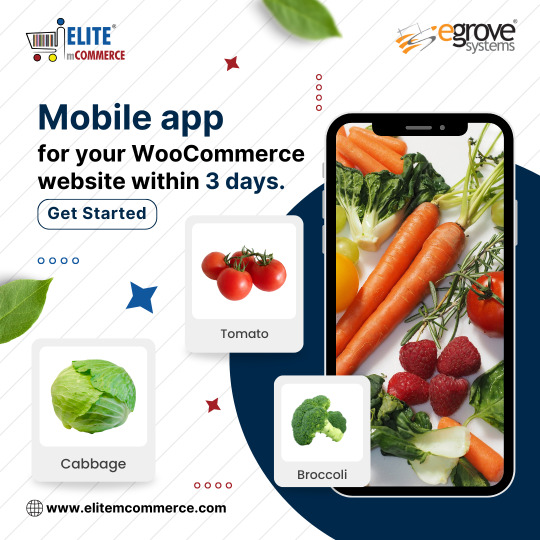
Grocery Mobile App Solution Gets Enhanced
#mobile#app#development#mobileapp#apple#appdevelopment#mobileappdevelopment#mobileapps#applicationdevelopment#appdevelopmentcompany#mobilelegendbuild#web_development#mobileappdesign#mobileapplication#mobileappdevelopmentcompany#groceryapp#meatdelivery#RetailStore#ecommercestore#elitemcommerce#ecommerceappdesignanddevelopment#egrovesystems#mobileappdevelopmentservices#softwaredevelopmentcompany#GroceryDeals#groceryshop#groceryshopping#onlinedelivery#onlinedeliveryservice
2 notes
·
View notes
Text
Exploring the Pros and Cons of Grocery Delivery Apps

In today's fast-paced, digitally connected world, convenience often dictates consumer behavior. One sector that has significantly evolved to meet this demand is grocery shopping. Grocery delivery apps have surged in popularity, offering a seamless alternative to traditional shopping methods. These platforms provide users with the ability to browse, select, and purchase groceries from the comfort of their homes or workplaces — often with same-day or even within-the-hour delivery options.
From Instacart and Amazon Fresh to local supermarket apps and specialized startups, grocery delivery services have become an integral part of modern life. But as with any innovation, this convenience is accompanied by both benefits and challenges. In this blog, we’ll explore the major pros and cons of grocery delivery apps to help consumers make informed decisions.
The Pros of Grocery Delivery Apps
1. Unmatched Convenience
One of the most significant benefits of grocery delivery apps is the unparalleled convenience they offer. Users can shop for groceries anytime and anywhere — whether on a lunch break, during a commute, or while watching TV. There's no need to drive to a store, push a shopping cart, or wait in long checkout lines. With just a few taps, your weekly groceries can be scheduled to arrive at your doorstep.
2. Time-Saving Efficiency
In our increasingly busy lives, time has become a precious commodity. Grocery delivery apps save consumers hours each week by eliminating the need to physically visit stores. This is particularly beneficial for working professionals, parents with young children, elderly individuals, or anyone with mobility challenges. What once took hours can now be accomplished in minutes.
3. Wide Product Selection
Many grocery delivery platforms partner with multiple retailers or operate massive inventories. This allows users to access a wide range of products — from fresh produce and household items to specialty foods and international goods. Some apps also allow users to shop from multiple stores in one order, further expanding product availability.
4. Real-Time Inventory Updates
Unlike traditional shopping, where you may only discover out-of-stock items at the shelf, grocery apps often provide real-time inventory updates. This feature minimizes surprises and allows users to select alternative items immediately if something is unavailable.
5. Personalized Recommendations
With the help of AI and data analytics, grocery delivery apps can offer personalized suggestions based on past purchases, dietary preferences, and even seasonal needs. This makes shopping more intuitive and aligned with user habits.
6. Contactless Shopping Experience
In the wake of the COVID-19 pandemic, the appeal of contactless shopping surged. Grocery delivery apps helped reduce health risks by limiting physical interaction, which was critical for high-risk individuals. Even post-pandemic, many consumers continue to value the safety and hygiene offered by these services.
7. Subscription and Loyalty Perks
Many apps offer subscription models (like Instacart Express or Amazon Prime) with benefits such as free delivery, exclusive deals, and early access to sales. Some also have built-in loyalty programs that reward users for frequent purchases, encouraging customer retention.
8. Budget Management Tools
Apps often allow customers to track spending in real-time, compare prices across brands, and apply digital coupons. This can promote more mindful spending and reduce impulse buys — something that is harder to control in-store.
9. Eco-Friendly Options
Some grocery delivery companies offer sustainable packaging, batch deliveries, or the option to skip plastic bags. This can reduce the environmental impact compared to individual trips to the store in personal vehicles.
10. Access for Remote Areas
In certain regions, especially rural or suburban areas with limited grocery options, delivery apps can provide access to a broader range of products than what's locally available.
The Cons of Grocery Delivery Apps
1. Additional Costs
One of the primary drawbacks of using grocery delivery apps is the additional cost. Delivery fees, service charges, and tips can significantly increase the overall bill. For budget-conscious consumers, these extras can be a deterrent.
2. Product Substitution Issues
If an item is out of stock, many apps allow substitutions. However, the replacement item may not meet your expectations in terms of brand, size, or quality. While some apps allow users to pre-select substitution preferences, it's still a common pain point.
3. Lack of Control Over Product Selection
When shopping in person, customers can inspect produce, check expiration dates, and select the freshest items. With delivery, you’re relying on someone else’s judgment, which may not match your standards, especially for fresh produce, dairy, or meats.
4. Delivery Delays and Scheduling Conflicts
Despite promises of rapid delivery, delays do happen. Traffic, weather, and high demand can all interfere with scheduled deliveries. Some areas may have limited delivery slots, especially during peak times or holidays.
5. Limited Store Coverage
Not all grocery stores are partnered with delivery platforms, which can limit your options. Some local or specialty stores may be unavailable through these apps, requiring separate trips or alternate orders.
6. Privacy and Data Concerns
Grocery apps collect significant user data, including shopping habits, location, and payment information. While this data is often used for personalization and targeted marketing, it also raises privacy concerns. Data breaches or misuse of personal information remain a valid worry.
7. Impulse Buying Through Promotions
While in-store impulse buying is driven by visual cues, apps also present their own temptations. Flash sales, digital coupons, and “recommended for you” sections can lead users to purchase unnecessary items, undermining budget-conscious shopping.
8. Technological Barriers
Older adults or those less comfortable with digital technology may find grocery apps difficult to use. Issues like poor internet access, unfamiliar interfaces, or lack of smartphone literacy can limit accessibility for certain demographics.
9. Service Inconsistencies
The quality of service can vary greatly depending on the delivery person, time of day, or even geographic region. From wrong items to missing bags, inconsistent execution can frustrate users and undermine the convenience the app aims to provide.
10. Environmental Impact of Individual Deliveries
While batch deliveries may reduce environmental impact, frequent individual deliveries can increase carbon emissions due to extra vehicle miles. Unless optimized efficiently, this could counteract the eco-friendly image many services promote.
Tips for Getting the Most Out of Grocery Delivery Apps
If you choose to use grocery delivery apps, here are some tips to maximize benefits and minimize frustrations:
Use Substitution Preferences: Customize your substitution preferences to avoid surprises.
Plan Ahead: Order early to secure the best delivery slots and avoid delays.
Compare Prices: Check multiple platforms or stores to ensure you're getting the best deals.
Join Loyalty Programs: If you use a service frequently, subscription models may save money in the long run.
Inspect Orders Immediately: Report missing or incorrect items promptly for refunds or credits.
Tip Fairly: Remember that many delivery drivers rely on tips as part of their income.
Read Reviews: User feedback can highlight consistent service issues or strengths for specific stores or products.
Be Mindful of Promotions: Stick to your list to avoid overspending on unnecessary deals.
The Future of Grocery Delivery Apps
The grocery delivery market is still evolving. Innovations such as drone deliveries, AI-based inventory systems, and hyperlocal fulfillment centers promise to improve speed, accuracy, and environmental sustainability. As competition increases, companies are investing in better customer service, faster logistics, and more ethical sourcing practices.
Moreover, the integration of voice assistants (like Alexa and Google Assistant), smart refrigerators, and IoT (Internet of Things) devices will further streamline how consumers interact with grocery services. Personalized, automated, and even predictive shopping could become the norm.
However, challenges remain �� particularly in achieving fair wages for workers, balancing cost with quality, and ensuring equitable access for all demographics.
Conclusion
Grocery delivery apps represent a significant advancement in the way we shop for everyday essentials. They offer convenience, time savings, and a modern approach to grocery shopping that aligns well with the digital lifestyles of many consumers. But like any innovation, they come with limitations — from higher costs and delivery hiccups to reduced control over product quality.
Whether grocery delivery apps are right for you depends on your personal needs, priorities, and lifestyle. By understanding the pros and cons, you can make informed choices and get the most out of these increasingly popular platforms. As technology continues to evolve, it’s likely that grocery delivery will become even more efficient, personalized, and integrated into our daily routines — making the future of shopping just a tap away.
#grocerydeliveryapp#whitelabelgrocerydeliveryapp#ondemandgrocerydeliveryapp#grocerydelivery#grocerydeliveryappscript#grocerydeliveryscript#multideliveryapp#gojekcloneappscript#groceryapp#groceryappscript
0 notes
Text

Looking to build an on-demand grocery app like Coles? This guide covers everything you need – from development cost and must-have features to the right tech stack. Whether you're a startup or an enterprise, get insights to develop a scalable and user-friendly grocery delivery app customized to your business goals. Start your digital transformation today!
0 notes
Text
How Much Does It Cost to Develop a Grocery App?
With the growing demand for online grocery shopping, businesses are shifting to digital platforms to provide seamless and convenient shopping experiences. But one of the most common questions we get is: How much does it cost to develop a grocery app?
The cost depends on several key factors:
🔹 App Features & Functionality 🔹 Platform Selection 🔹 Technology Stack 🔹 UI/UX Design 🔹 Security & Payment Integrations
Investing in a grocery app is not just about the cost—it's about providing convenience, increasing sales, and staying ahead in the competitive market.
Want to know the detailed cost breakdown and how to build an optimized grocery app for your business? Check out our latest blog: 🔗 https://www.rlogical.com/blog/cost-to-develop-a-grocery-app
Looking to develop a grocery app? Our expert team at Rlogical Techsoft can help you build a high-performance, cost-effective app tailored to your business needs.
📩 Let’s discuss your project today! 🌐 Website: www.rlogical.com 📧 Mail: [email protected] 📞 Sales: +91-7490802036
#GroceryAppDevelopment#MobileAppDevelopment#TechSolutions#BusinessGrowth#Ecommerce#StartupTech#DigitalTransformation#GroceryAppsolutions#GroceryApp#GroceryApps#mobileappdevelopment#appdevelopment
0 notes
Text
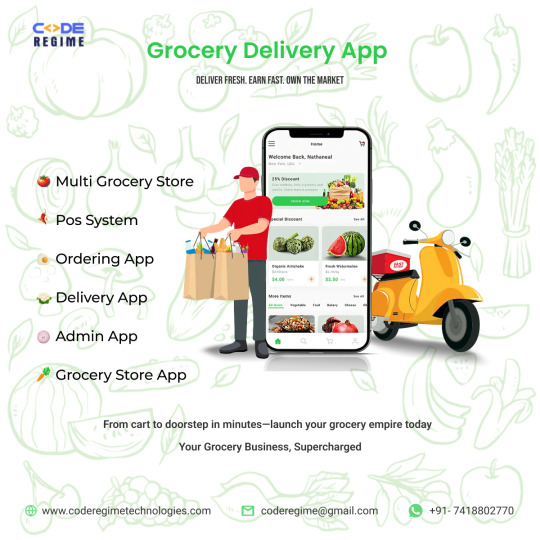
Looking to launch your own grocery delivery app?
Code Regime Technologies brings you a fully customizable grocery delivery clone designed to fit your brand, business model, and customer needs.
.
With our solution, you get:
* A seamless ordering experience – Easy browsing, smart search, and a smooth checkout process.
* Real-time tracking – Keep customers updated with live order tracking and notifications.
* Flexible payment options – Integrate multiple gateways for secure and hassle-free transactions.
* Vendor & inventory management – Streamline your operations with a powerful admin dashboard.
* Custom branding & features – We personalize the design, features, and functionalities to match your vision.
#clone app#grocery app development#groceryapp#groceryshopping#mobile app development#custom mobile app development company#cloneappdevelopment#aiappdevelopmentcompany#software development
0 notes
Text
Online Grocery Market Size and Production: A Global Perspective to 2032

The online grocery market is experiencing remarkable growth as more consumers embrace the convenience of purchasing groceries online. With technological advancements, rising internet penetration, and shifting consumer preferences, the global online grocery industry is poised to witness substantial expansion in the coming years. This research delves into the market's size, share, and growth potential from 2025 to 2032.
The online grocery market refers to the buying and selling of food and beverage products through digital platforms such as websites, apps, and e-commerce platforms. It includes a broad range of items, including fresh produce, dairy, packaged goods, beverages, and personal care products. Consumers can conveniently shop for groceries from the comfort of their homes and have them delivered directly to their doorsteps or opt for in-store pickup.
Get a Free Sample Copy - https://www.skyquestt.com/sample-request/online-grocery-market
The growth of online grocery shopping is fueled by several key factors, including the increasing adoption of smartphones, improved internet infrastructure, enhanced delivery services, and changing consumer behavior.
Market Size & Forecast
As of 2024, the global online grocery market is valued at USD 394.13 billion. This market is projected to grow at a compound annual growth rate (CAGR) of 23.45% from 2025 to 2032, reaching a market size of USD 2126.05 billion by the end of 2032.
The surge in online grocery sales is primarily driven by increased consumer confidence in online shopping, improvements in delivery logistics, and the ongoing trend toward convenience and time-saving solutions.
Key Market Drivers
1. Technological Advancements: With the proliferation of smartphones, apps, and voice-assisted shopping platforms (e.g., Amazon Alexa, Google Assistant), consumers can now shop for groceries seamlessly. Furthermore, technologies such as AI and machine learning are being used to personalize shopping experiences and predict consumer preferences, making online grocery platforms more efficient and customer-centric.
2. Changing Consumer Behavior: The COVID-19 pandemic accelerated the shift to online shopping, and many consumers have continued to embrace the convenience of e-grocery shopping even post-pandemic. Younger consumers, in particular, are more inclined to shop online for groceries due to the convenience and time-saving benefits it offers.
3. Increased Focus on Convenience: Busy lifestyles and time constraints have led to an increased demand for online grocery shopping. Consumers are looking for ways to streamline their shopping experiences, with home delivery and pick-up options being particularly attractive.
4. Expansion of Delivery Networks: Retailers and e-commerce platforms are expanding their delivery infrastructure to meet the growing demand for faster and more efficient delivery. In some regions, companies are even experimenting with drone and autonomous vehicle delivery services to further reduce delivery times.
5. Broadening Product Offering: Online grocery platforms are expanding their product offerings to include not just packaged goods but also fresh produce, organic food, frozen items, and even health and wellness products. This diversified range helps to attract a larger customer base.
Make an Inquiry to Address your Specific Business Needs - https://www.skyquestt.com/speak-with-analyst/online-grocery-market
Market Segmentation
The online grocery market can be segmented based on various factors:
1. By Product Type:
- Fresh Food (Fruits, Vegetables, Meat, Seafood, Dairy, etc.): This segment holds a significant share in the online grocery market due to the increasing demand for fresh and organic food items. The availability of these products has been a major driver in the growth of online grocery platforms.
- Packaged Food: Items such as snacks, cereals, frozen meals, and canned goods are widely available online, offering convenience for consumers looking for pantry staples.
- Beverages and Non-Alcoholic Drinks: Consumers increasingly opt for online purchasing of beverages, including bottled water, juices, and soft drinks.
2. By Platform Type:
- E-commerce Websites: Large-scale online platforms like Amazon, Walmart, and Target dominate this category, offering an extensive range of grocery products.
- Dedicated Grocery Delivery Apps: Companies like Instacart, FreshDirect, and Ocado focus exclusively on delivering groceries, providing a more personalized shopping experience.
3. By Region:
- North America: The U.S. and Canada are major players in the online grocery market, with a well-established infrastructure for online shopping and delivery.
- Europe: The UK, Germany, and France are expected to experience strong growth due to the rising popularity of online grocery shopping and robust logistics networks.
- Asia-Pacific: Countries like China, India, and Japan are showing rapid growth in the online grocery sector, driven by large populations, increasing internet penetration, and the rising trend of online retail shopping.
Competitive Landscape
The online grocery market is highly competitive, with both established grocery retailers and e-commerce giants vying for market share. Key players in the market include:
Amazon (US)
Walmart (US)
Alibaba Group (China)
JD.com (China)
Ocado (UK)
Instacart (US)
Tesco (UK)
Carrefour (France)
Kroger (US)
Mercadona (Spain)
Ahold Delhaize (Netherlands)
Peapod (US)
Coop (Switzerland)
Rewe (Germany)
E.Leclerc (France)
Sainsbury's (UK)
Target (US)
Woolworths (Australia)
Migros (Switzerland)
Shipt (US)
To stay competitive, companies are focusing on enhancing their digital platforms, offering subscription services, providing discounts and promotions, and optimizing delivery networks. Moreover, many companies are embracing innovative business models such as “dark stores” (facilities dedicated solely to fulfilling online grocery orders) to meet the increasing demand for fast delivery.
Take Action Now: Secure Your Online Grocery Market Today - https://www.skyquestt.com/buy-now/online-grocery-market
Challenges
Despite the strong growth, the online grocery market faces several challenges:
1. Logistical Complexities: Delivering groceries, especially fresh produce, requires sophisticated logistics. Ensuring that products remain fresh and are delivered on time can be a challenge, particularly in regions with less developed infrastructure.
2. Cost of Delivery: Delivery costs can add a significant amount to the overall price of groceries. While some companies offer free delivery for larger orders, managing delivery costs without compromising profitability remains a challenge.
3. Customer Retention: Maintaining customer loyalty is crucial in the highly competitive online grocery market. Companies must offer consistent, high-quality service, including fast delivery, accurate orders, and competitive pricing.
Market Outlook
The future of the online grocery market is promising, with innovations in technology, supply chain management, and delivery systems enhancing the overall shopping experience. As the global population continues to embrace digital platforms, the convenience of online grocery shopping will drive sustained growth.
In addition to regional growth, there will be an increasing focus on sustainability, with more consumers prioritizing environmentally friendly products and packaging. Furthermore, advancements in AI and machine learning will allow retailers to offer more personalized shopping experiences and predictive purchasing options.
The global online grocery market is on an upward trajectory, driven by technological advancements, changing consumer behavior, and the growing demand for convenience. With a projected CAGR of 23.45% from 2025 to 2032, the market is expected to grow significantly, reaching an estimated USD 2126.05 billion by 2032. Key players in the market will continue to innovate and invest in their platforms to cater to the evolving demands of consumers, while logistical and operational challenges remain areas for improvement.
Read Online Grocery Market Report Today - https://www.skyquestt.com/report/online-grocery-market
The future of the online grocery market looks bright, with robust growth expected across all regions and market segments. As e-commerce continues to disrupt traditional retail, online grocery shopping will become an increasingly integral part of consumers' daily lives.
#OnlineGrocery#GroceryDelivery#GroceryShopping#GroceryStoreOnline#GroceryAtHome#DigitalGrocery#GroceryOnDemand#FoodDelivery#GroceryShoppingOnline#GroceryBusiness#EcommerceGrocery#OnlineGroceryStore#GroceryTech#GroceryApp#OnlineGroceryMarket#OnlineFoodDelivery#GroceryEcommerce#SmartGrocery#GroceryServices#OnlineGroceryShopping
0 notes
Text

Building a successful grocery delivery app comes with its fair share of challenges. From managing real-time inventory to ensuring smooth delivery logistics, app developers face obstacles that can impact user experience. But don't worry—solutions are within reach! Let’s dive into the top 5 common challenges in grocery delivery app development and how to tackle them effectively.
0 notes
Text
Grocery Instant Delivery: Fresh Fruits, Vegetables, Atta, and Daal at Your Doorstep in Minutes
In today’s fast-paced world, waiting in long queues or battling traffic to buy everyday essentials is a thing of the past. With grocery instant delivery, you can now get fresh fruits, vegetables, atta, and daal delivered straight to your home in no time. Whether you’re a busy professional, a homemaker, or a student, this convenient service ensures that you never run out of the essentials you need to whip up a hearty meal.
Why Choose Grocery Instant Delivery?
Time-Saving Convenience: Skip the hassle of grocery shopping and reclaim your valuable time.
Guaranteed Freshness: Get farm-fresh fruits and vegetables delivered in top-notch condition.
Wide Range of Essentials: From staples like atta and daal to perishable produce, find everything you need at the click of a button.
Eco-Friendly Practices: Many instant delivery services use sustainable packaging, reducing your environmental footprint.
What’s in the Bag? The Everyday Essentials You Can Instantly Order
Fresh Fruits: Juicy apples, sweet bananas, exotic berries, and more, ready to energize your day.
Farm-Fresh Vegetables: Crisp greens, root vegetables, and everything in between for your kitchen.
Atta (Wheat Flour): High-quality atta for perfectly soft chapatis and delicious baking.
Daal (Lentils): A variety of lentils, from protein-rich to comforting classics, to suit every recipe.
How Grocery Instant Delivery Works
Browse and Select: Choose from a wide range of fresh and packaged essentials on the app or website.
Place Your Order: Add items to your cart, review, and confirm your order.
Sit Back and Relax: A delivery professional will bring your groceries to your doorstep, often in under an hour!
Tips for Maximizing Your Grocery Instant Delivery Experience
Plan Ahead: Create a shopping list for a seamless ordering process.
Choose Local Vendors: Many instant delivery platforms partner with local stores, supporting the community.
Check Delivery Windows: Opt for flexible delivery slots that fit your schedule.
Why It’s the Future of Grocery Shopping The demand for grocery instant delivery is growing as people embrace the convenience of modern technology. With robust delivery networks and a focus on freshness and quality, this service is redefining how we shop for everyday essentials.
Conclusion Gone are the days of rushing to the market for a last-minute grocery run. With grocery instant delivery, you can enjoy fresh fruits, vegetables, atta, and daal delivered to your home in no time. It’s quick, hassle-free, and perfect for today’s busy lifestyle. So, why wait? Try it today and experience the joy of instant convenience!
0 notes
Text
Online Delivery Apps: Revolutionizing Grocery Shopping with Convenience and Speed
In today’s fast-paced world, time is a precious commodity. With busy schedules and long work hours, many of us barely have time to visit physical stores for our daily essentials. Enter the online delivery app, a game-changer that brings groceries straight to your doorstep with just a few taps on your phone.
What Is an Online Delivery for Groceries?
An online delivery app is a digital platform that allows you to browse, order, and pay for groceries conveniently. These apps connect you to a wide variety of products, including fresh produce, pantry staples, and even household items. With real-time updates and user-friendly interfaces, these apps are becoming an integral part of modern living.
Key Features of a Reliable Online Delivery App
Wide Product Range: From fresh vegetables and dairy products to exotic spices and cleaning supplies, these apps cater to all your needs.
Real-Time Tracking: Know exactly when your groceries will arrive with live tracking features.
Flexible Payment Options: Pay using credit/debit cards, UPI, digital wallets, or even cash on delivery.
Customizable Deliveries: Schedule deliveries at your convenience, whether it’s same-day, next-day, or weekly.
Why Are Online Delivery Apps Becoming Popular?
Convenience: No more long queues or carrying heavy bags—everything you need is delivered to your home.
Time-Saving: Save hours every week by shopping in minutes.
Exclusive Discounts: Many apps offer deals, discounts, and cashback on essentials.
Contactless Delivery: A safer option, especially post-pandemic, ensuring hygiene and safety.
How to Choose the Best Online Delivery App?
With numerous apps available, finding the right one can be tricky. Look for these qualities:
High user ratings and positive reviews.
An intuitive interface for seamless navigation.
A reliable customer support team to address any issues.
Popular Online Delivery Apps Making Waves
Several apps like Instamart have carved a niche in the grocery delivery segment.
The Future of Online Delivery Apps
As technology evolves, so will online delivery apps. Features like AI-driven recommendations, drone deliveries, and subscription-based models are expected to redefine the industry further.
Final Thoughts
An online delivery app isn’t just a tool; it’s a lifestyle upgrade. Whether you’re stocking up on essentials or indulging in specialty items, these apps offer an unmatched combination of convenience, variety, and speed.
So why wait? Explore your favorite online delivery app today and experience hassle-free grocery shopping at its finest.
0 notes
Text
Loads more food content on my channnneeeeel! #food #foodie #foodporn #foodphotography #foodstagram #instafood #yummy #delicious #foodlover #foodblogger #foodgasm #tasty #foodiesofinstagram #eats #eeeeeats #foodpics #nomnom #forkyeah #dinner #lunch #breakfast #foodcoma #cleaneating #healthyeating #foodgram #snack #comfortfood #recipe #cheflife #homemade #kitchen #traderjoes #traderjoesfoodreviews #traderjoeshaul #traderjoesmusthaves #traderjoescookbook #traderjoesfood
#foodtour#nyc food#foodies#foodpics#foodlover#foodporn#food photography#foodgasm#foodie#food#healthy food#foodmyheart#tw food#trader joes#traderjoeshayl#trader joes haul#traderjoeshaul#grocery#groceries#grocery store#grocery list#grocery shopping#grocery haul#grocery delivery#grocery prices#grocery online#groceryapp#grocery help#shopping#online shoppping
0 notes
Text
E-Scooter App Development Company in Texas| Zimble Code
In recent years, cities have seen big changes in how people get around, with e-scooters becoming a popular choice. As cities get busier, more people are looking for eco-friendly ways to travel. This is where an e-scooter App Development Company in Texas steps in, offering smart solutions for modern commuters. In this post, we'll look at how apps are shaping the future of transportation, from taxi booking to food and grocery delivery.

The Growth of e-Scooter Apps
With the rise of e-scooters, there's a growing need for apps that make using them easier. A Texas-based e-scooter App Development Company can create user-friendly apps where people can find, rent, and pay for e-scooters easily. These apps help reduce traffic jams and pollution.
Key Features of e-Scooter Apps
Easy Sign-Up: Users can quickly create an account and manage their profile.
Real-Time Tracking: Users can find nearby e-scooters and track their rides live.
Simple Payments: Safe and quick payment options.
Ride History: Users can check past rides and spending.
Feedback: Users can share reviews to improve the service.
Taxi Booking App Development
With cities growing fast, finding quick and reliable transport is more important than ever. A Taxi Booking App Development Company builds apps that link drivers and passengers, making travel smooth and easy.
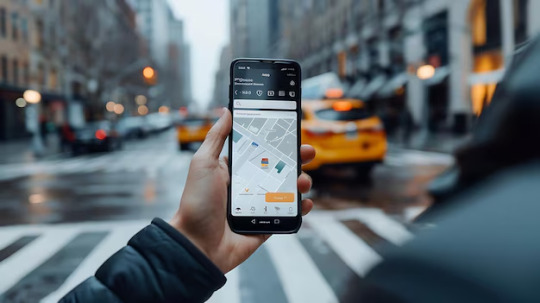
Key Features of Taxi Apps
Simple Design: A layout that makes booking easy.
Driver and Passenger Profiles: Both can create accounts to make the service better.
GPS Navigation: Helps drivers find the fastest routes.
Fare Estimates: Users can see the cost before they book.
Ratings: Users can rate their rides to maintain service quality.
On-Demand Food Delivery Apps in the USA
The food delivery industry has grown rapidly, especially after the pandemic, and on-demand food delivery app development in the USA is now essential for connecting restaurants and customers. These apps make it easy for users to order their favourite meals from home.
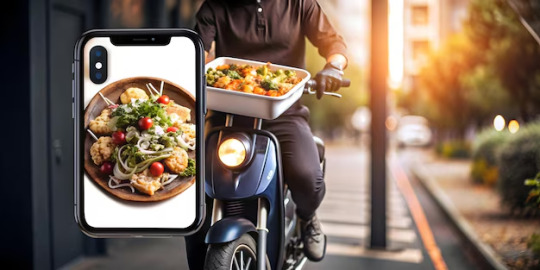
Key Features of Food Delivery Apps
Restaurant Listings: Users can easily browse menus and order their preferred meals.
Order Tracking: Real-time order tracking keeps customers updated on delivery status.
Multiple Payment Options: Options like cards, digital wallets, or cash make payments simple.
Discounts: Special offers and deals enhance the customer experience.
Customer Support: Dedicated support is available to address any issues customers may face.
By investing in on-demand food delivery app development in the USA, businesses can meet rising consumer demand and provide a seamless, efficient dining experience.
Grocery Delivery App Development
Grocery delivery apps are increasingly popular, especially for busy lifestyles. A Grocery Delivery App Development Company in the USA creates apps that allow users to order groceries conveniently and have them delivered right to their doorstep.
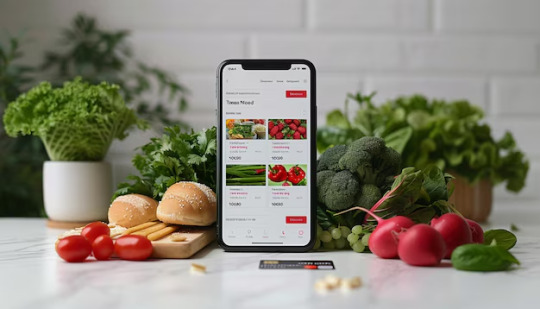
Key Features of Grocery Delivery Apps
Easy Navigation: Users can quickly find and order groceries with a user-friendly interface.
Search & Filters: Search for specific items by category, brand, or dietary needs.
Shopping Cart & Wishlist: Save items for future orders or add them to a shopping cart.
Flexible Delivery Times: Choose the most convenient delivery time for added flexibility.
Order History: Easily reorder favourite items from past purchases.
Partnering with a Grocery Delivery App Development Company in the USA enables businesses to tap into the growing demand for convenient grocery shopping and delivery solutions.
Why Choosing the Right Developer Matters
Whether you're building an e-scooter, taxi, food, or grocery app, picking the right development partner is crucial. A skilled e-scooter App Development Company in Texas understands both the tech side and what your business needs.
What to Look For
Experience: Choose a company with a good track record.
Customization: Make sure they can tailor the app to your business.
Support: The company should offer help after the app is launched.
User-Friendly Design: Focus on an easy and engaging experience.
Tech Stack: Ensure the tech they use fits your needs.
Conclusion
As e-scooters and on-demand services become more popular, partnering with a reliable e-scooter App Development Company in Texas can help businesses meet the growing demand.
Future Trends in Delivery Apps
AI and Machine Learning: Personalized experiences and optimized delivery routes.
Contactless Delivery: Safer, no-contact deliveries will become more common.
Sustainability: Eco-friendly practices, like electric vehicles and sustainable packaging, will attract more users.
Subscriptions: Regular delivery services can provide convenience and a steady income.
Smart Device Integration: Apps may connect with smart home devices, like refrigerators, to make ordering easier.
Final Thoughts
The on-demand food and grocery delivery market in the USA offers endless opportunities. By focusing on user needs, leveraging the latest technology, and choosing the right app development partner, you can create a successful app that meets today's consumer demands.
📞 Ready to elevate your business with cutting-edge digital solutions?
Let's talk! Contact us today and discover how Zimble Code can help turn your ideas into reality.
📍 Visit Us: 222 Broadway, New York, NY 10038
���� Call Us: +1 516-513-4548
📧 Email: [email protected]
Partner with a top-rated company like Zimble Code to ensure your app meets your business goals.
Could you stay Connected with Us?
Follow us on social media to stay updated on the latest trends and insights in mobile app development: Facebook, Instagram, Pinterest
Join the growing list of businesses that trust Zimble Code to deliver high-quality, impactful digital solutions. Together, we'll create something extraordinary! 🌟
#eScooterApp#UrbanMobility#TexasTech#AppDevelopment#SmartTransport#TaxiApp#RideSharing#TaxiBooking#MobilitySolutions#FoodDeliveryApp#OnDemandApp#FoodTech#DeliverySolutions#GroceryApp#GroceryDelivery#DeliveryTech PickupAndDelivery#DeliveryApp#LogisticsSolutions MobileAppDevelopment#AppSolutions#AppDevelopmentUSA#TechInnovation#CustomApps
0 notes
Text

Need mobile app development services? Look no further! Our team of expert developers specializes in creating top-notch, user-friendly mobile apps for both iOS and Android platforms. From idea to launch, we take care of every step. Get in touch with us today to discuss your project! www.webapphealing.com [email protected] +91 98911 07522
#webapphealing#MobileAppDevelopment#webdevelopment#mobileapp#mobileappointments#mobileappbuilder#branding#mobileapplication#mobileappdevelopmentcompany#business#startup#android#ios#petapp#drappointment#groceryapp#Evapp#taxiapp#sportapp#fuelapp#bookingapp#OnDemandapp#webapphealingtechnology#39m
1 note
·
View note
Link
0 notes
Text

Looking to launch your own grocery delivery app?
Code Regime Technologies brings you a fully customizable grocery delivery clone designed to fit your brand, business model, and customer needs.
.
With our solution, you get:
* A seamless ordering experience – Easy browsing, smart search, and a smooth checkout process.
* Real-time tracking – Keep customers updated with live order tracking and notifications.
* Flexible payment options – Integrate multiple gateways for secure and hassle-free transactions.
* Vendor & inventory management – Streamline your operations with a powerful admin dashboard.
* Custom branding & features – We personalize the design, features, and functionalities to match your vision.
#clone app development company#custom mobile app development company#cloneappdevelopment#blockchaintechnology#mobile app development#grocery app development#groceryapp#grocery store#groceryshopping
0 notes
Text

Grocery is essential need of any household and in this busy era no one has much to spend in the market on daily basis. Strating a business with grocery deliery app could be profitable. If you are looking for a grocery delivery app development company, visit us to know complete detail and book your free live demo app today.
1 note
·
View note
Text
Comprehensive Guide to Grocery Delivery App Development in 2024 – 2025
Revolutionize the grocery shopping experience with our ultimate guide to grocery delivery app development. Get in touch with a grocery delivery app development company today and be a part of the innovation.

#GroceryDelivery#AppDevelopment#TechInnovation#TechTrends#DigitalInnovation#GroceryApp#TechSolutions
0 notes